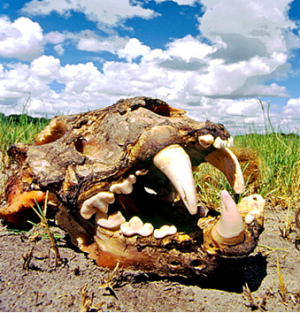News
Latest Lion Aid News
A CITES non-detriment finding is a sham?
Sunday 24th April 2011
|
Basically, countries produce these for CITES in order to keep exporting species of concern, but sadly and perhaps not unexpectedly, CITES is so far out of the loop of reality that they do not set standards for such reports nor question the content.
Here, I will rely on a scientific paper by Matthew Smith et al (2011; Assessing the impacts of international trade on CITES-listed species: Current practices and opportunities for scientific research (Biological Conservation 144 ; 82–91)
This paper has the following points to make:
• The Convention on International Trade in Endangered Species of Wild Fauna and Flora (CITES) came into effect in 1975 to protect certain species of wild fauna and flora against over-exploitation through international trade. Determining which trade is detrimental to the survival of species in the wild can be a major difficulty in the implementation of CITES by national authorities, partly due to limited knowledge and understanding of the species’ biology, management, and the impacts of harvesting. Some of this knowledge could be acquired through targeted scientific research. However, to date there exists no general overview of the current use of biological information in determining detriment in CITES to help scientists identify research priorities. • One-hundred and seventy-five countries are currently signatory to CITES, agreeing to ensure that international trade is not detrimental to the survival in the wild of species listed in the CITES Appendices. The term ‘‘detrimental’’ is used throughout the Convention text although no formal definition is given. Appendix II comprises species [like the African lion – CITES has still not classified western African lions as Appendix I species despite the unique genetics and the IUCN status as “regionally endangered”] that may become threatened with extinction unless international trade is regulated in order to avoid utilization incompatible with their survival. In this case, the possible detrimental impact of international trade on wild populations has to be assessed by the exporting country only. • In the case of Appendix II species, the Convention text identifies some aspects of ‘‘not detrimental’’ by requiring that export ‘‘should be limited in order to maintain that species throughout its range at a level consistent with its role in the ecosystems in which it occurs and well above the level at which that species might become eligible for inclusion in Appendix I’’. Therefore, all international trade in taxa listed in the two main CITES Appendices must be accompanied by an assessment of the impact of trade on wild populations, termed a Non-Detriment Finding (NDF). • Signatories to CITES are required to designate one or more Scientific Authorities (SA) to make NDFs and to advise the authorities who issue CITES permits (designated as Management Authorities by CITES). There is no specific methodology set by the Convention on how to make NDFs, although resolutions of the Conference of the Parties to CITES provide some further information and guidance (CITES, 1997, 2004). Scientific Authorities do not normally make the reasoning behind NDFs publically available. This makes it difficult to assess whether improvements could be made to current methods, to identify where important knowledge gaps exist, and direct scientific research to improve NDFs. • Information about the effects of harvesting on the populations was less frequently outlined in the case studies, and was highly variable between the different ‘‘life-form’’ groups. Some 67% of the studies reported effects of harvesting on the population but only 7% reported on the impacts of harvesting on the ecosystem, even though most reported some information on the role of the taxon in the ecosystem (73%). This supports our general impression that detriment was primarily assessed in terms of its effects on the harvested taxon, and less often in terms of the effects on the species role in the ecosystem. A minority of the studies reported information on the recovery rate of the harvested taxon (43%) and only 35% reported information on a sustainable harvesting level. As indicated above, the determination of sustainable harvesting levels is not always required in order to make NDFs, although it is likely to be a consideration when species are subjected to repeated harvests over time (CITES, 1997). • In general, there appears to be relatively little peer-reviewed literature on population demography, responses to harvesting, or sustainable use of CITES-listed species. A recent analysis from South Africa showed that the only published information for >90% of CITES-listed species related to taxonomy and distribution (South African National Biodiversity Institute, unpublished data). • For example, annual harvest quotas for African lions were estimated using the knowledge of the abundance of the population in each region by regional experts, their assessment of the condition of the animals being shot, and their knowledge of the impacts of quota levels in previous years.
We are at this point eager to receive from the authors of the paper an NDF prepared by Tanzania in 2008 about lions. From all published scientific accounts, Tanzania has set quotas for too high, does not know how many lions are in the country’s hunting concessions, and has allowed an unsustainable offtake including increasing numbers of male lions as young as 2 years old. Yet they issued an NDF finding?
Stay tuned, this should make fascinating reading and seems to have convinced CITES?
Picture credit: Chris Harvey Tags: CITES, International Trade, Non-Detriment Finding Categories: Trophy Hunting, Politics and Wildlife |
Add a comment | Posted by Pieter Kat at 13:48




